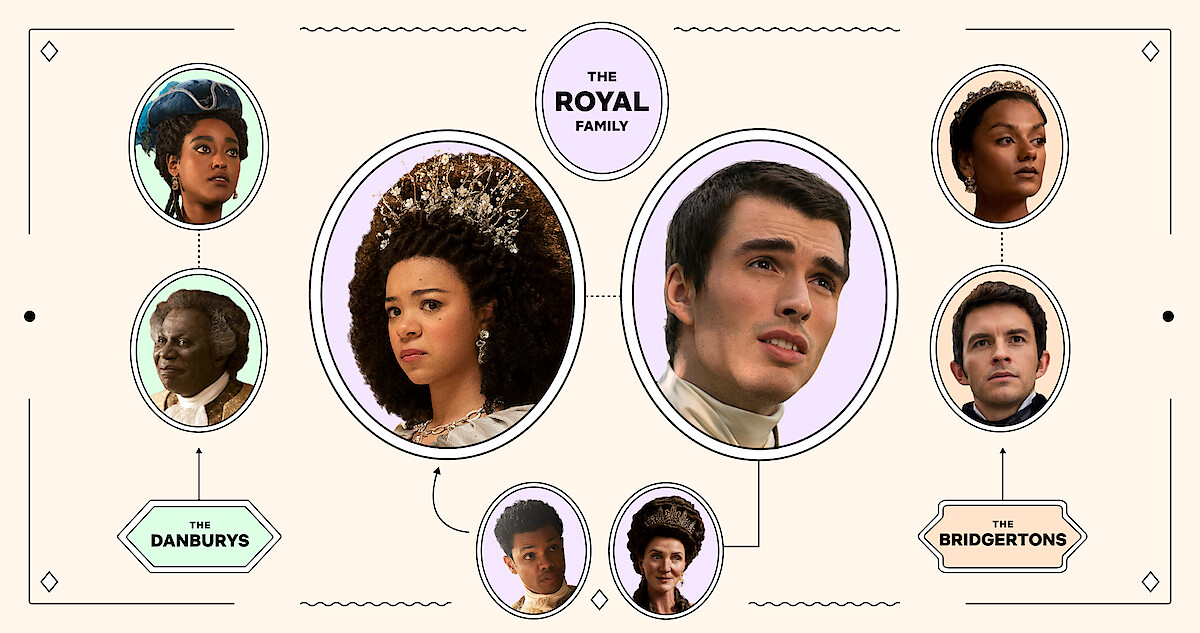Have you ever found yourself pausing, perhaps just a little, before asking a question in English? It's a common experience, you know, figuring out if you should use "do" or "does." Sometimes, a simple query, like "Does Charlotte have all three babies?", can really make you think about how these words work. It's not just about the meaning of the question itself, but rather about the little helper word that kicks it off.
This article, basically, is here to clear up that very confusion. We're going to pull apart that sentence, "Does Charlotte have all three babies?", and use it as a kind of learning tool. We'll look at why "does" is the correct choice there, and what that tells us about English grammar in general.
Understanding when to use "do" and "does" is, in a way, pretty important for speaking and writing English correctly. It's a key part of how we form questions and negative statements, and getting it right can make your communication much clearer. So, let's explore this together, shall we?
- How Tall Is 42 Dugg
- Jacob Javits Convention Center
- Rowan Throne Of Glass
- Real Chance Of Love
- Hunter S Thompson Daily Routine
Table of Contents
- The Core Question: Does Charlotte Have All Three Babies?
- Do vs. Does: Clearing Up the Confusion
- Practical Examples and Common Mistakes
- Frequently Asked Questions (FAQs)
The Core Question: Does Charlotte Have All Three Babies?
When you hear a question like "Does Charlotte have all three babies?", your mind might first jump to the subject matter. But for our purposes, we're really going to zoom in on that very first word: "Does." This word, you know, is a really important part of how we put questions together in English. It sets the stage, basically, for the rest of the sentence, telling us a lot about the subject and the action being discussed.
The phrasing "Does Charlotte have all three babies?" is a perfectly formed question in the present simple tense. It asks about a current state or fact. The reason "does" appears here is because of the subject, "Charlotte." She's a single person, a singular noun, and that, pretty much, dictates the form of the verb "do" we need to use. It's all about making sure our words agree with each other, which is kind of fundamental in English grammar.
So, we're not just looking at a question about Charlotte and her possible children. We're looking at a prime example of how the verb "do" changes its shape depending on who or what is doing the action, or in this case, being asked about. It's a subtle but powerful piece of grammar, you know, that really helps make our sentences sound right.
- Nike Sb Jordan 4
- Ojai Valley Inn Ojai California
- Top Of The Mornin Coffee
- Texas Roadhouse Mini Rolls
- Boo Did I Scare You Im A Job Application
Unpacking the Word "Does"
Let's really dig into the word "does" itself. According to, well, sources like the Oxford Advanced Learner's Dictionary, "does" is the "He/she/it form of do." This is, arguably, the most important piece of information right there. When we talk about a single person or thing, not "I," "you," "we," or "they," we use "does." Charlotte, in our example, fits right into that "she" category, or more generally, the singular noun category.
It's also described as the "Present simple of do, used with he/she/it." This means we use "does" for actions or states that happen regularly, are generally true, or are happening right now, but only when the subject is singular. For instance, "He does his homework every night," or "It does seem a bit strange." The question about Charlotte's babies is, you know, asking about a current state, so the present simple is exactly what we need.
The definition goes on to mention "Meaning, pronunciation, picture, example sentences, grammar, usage notes, synonyms and more." While we can't show a picture or pronunciation here, we can certainly focus on its meaning and usage. "Does" acts as a helper, or auxiliary, verb in our question. It doesn't carry the main meaning of the action; rather, it helps the main verb, "have," form the question. This dual role of "do" and "does" is, honestly, a key part of how they function in sentences.
In British English, as the text points out, "does" (pronounced dʌz) is "a form of the present tense (indicative mood) of do 1." The "indicative mood" simply means it's used for factual statements or questions, which is exactly what our example is. It's not a command or a wish, just a straightforward inquiry. So, you know, every part of that definition really fits our example sentence quite well.
"Does" as a Helping Verb
One of the most common ways "does" appears in English is as a "helping verb." You might also hear it called an "auxiliary verb." "My text" actually mentions that "The most common helping verbs are do, does, am, is, and are." These little words are, basically, like support staff for the main verb in a sentence. They help form questions, negative statements, and sometimes add emphasis, too.
In our example, "Does Charlotte have all three babies?", "does" is clearly acting as a helping verb. The main verb is "have." "Does" steps in front to turn the statement "Charlotte has all three babies" into a question. Without "does," we'd have to say something like "Has Charlotte all three babies?" which sounds a bit old-fashioned or, you know, just not quite right in modern English. So, it's pretty essential for forming natural-sounding questions.
Think about it like this: "Does" is helping "have" to do its job as a question-maker. It doesn't mean "to perform" something in this context; it's purely there for grammatical support. This is a crucial distinction, as "do" and "does" can also be action verbs, which we'll get to later. But in questions and negatives, they are, almost always, helping out.
Learning when to use these helping verbs is, honestly, a pretty big step in mastering English grammar. They show up everywhere, and getting them right makes a sentence flow so much better. It's, you know, a fundamental building block for clear communication.
Subject-Verb Agreement: Why "Charlotte" Needs "Does"
The key to understanding why "does" is used with "Charlotte" boils down to something called "subject-verb agreement." This means the verb in a sentence has to match its subject in number. If the subject is singular, the verb usually takes a particular form; if it's plural, it takes another. "My text" clearly states that "does" is "used with a singular noun or the pronouns he, she, or it." Charlotte is, essentially, a singular noun.
Consider the difference: If the subject were plural, say "the parents," we would ask, "Do the parents have all three babies?" We wouldn't say "Does the parents..." because "parents" is plural. Charlotte, being just one person, requires the singular form, which is "does." This rule is, really, very consistent in English. It's one of those things that, once you get it, makes a lot of other grammatical structures make sense.
This agreement is why we say "She does," "He does," "It does," or "The cat does." We don't say "She do" or "He do" in the present simple tense. That would sound, you know, a bit off to a native speaker. The "s" at the end of "does" is a marker, basically, that tells us the subject is singular and in the third person. It's a small detail, but it carries a lot of grammatical weight, honestly.
So, when you're forming a question or a negative statement in the present simple, and your subject is a singular person or thing, remember that "does" is your go-to helper. It's a pretty straightforward rule, and, you know, following it will make your English sound much more natural and correct. It’s a foundational piece of the language, really.
Do vs. Does: Clearing Up the Confusion
"My text" points out that "Both do and does are present tense forms of the verb do." This is, essentially, the core of the matter. They both come from the same root verb, "to do," but they are used in different situations. The text further explains that "Which is the correct form to use depends on the subject of your sentence." This is, you know, where the subject-verb agreement rule really comes into play. It's not about which word sounds better, but which word grammatically fits the subject.
Understanding when to use "do" and "does" is, honestly, key for speaking and writing English correctly. It's a very common point of confusion for language learners, and even for native speakers sometimes, especially when they're not thinking carefully. But once you grasp the simple rule about subjects, it becomes much easier. It's, basically, a pattern you learn to recognize and apply.
We've put together a guide to help you use "do," "does," and "did" as action and auxiliary verbs in the simple past and present tenses. While our main focus here is on "does" in the present, it's helpful to remember that "do" has these different forms and functions. The past tense form, "did," is, you know, a bit simpler because it works for all subjects, singular or plural. But for the present, the choice between "do" and "does" is pretty
- Chambers Bay Golf Course
- The Clock Coffee Shop
- Jacob Javits Convention Center
- Real Kung Fu Little Steamed Buns Ramen
- Tina Fey Net Worth



Detail Author:
- Name : Kenton Kunze
- Username : buck.hand
- Email : simonis.pascale@yahoo.com
- Birthdate : 1979-06-04
- Address : 791 Von Underpass Apt. 922 Micheleton, NM 36391
- Phone : +1-445-836-9905
- Company : Weber-Boehm
- Job : Procurement Clerk
- Bio : Earum necessitatibus nam ut sed. Iste error quidem ea repellendus dignissimos. Incidunt repellendus pariatur sed suscipit eius ipsa accusamus ad.
Socials
linkedin:
- url : https://linkedin.com/in/nadia_herzog
- username : nadia_herzog
- bio : Ad officia id ipsum consequatur et et.
- followers : 1210
- following : 2352
tiktok:
- url : https://tiktok.com/@nadia_official
- username : nadia_official
- bio : Sunt illum qui ipsa odio quis sit.
- followers : 363
- following : 571
twitter:
- url : https://twitter.com/nadia.herzog
- username : nadia.herzog
- bio : Iste saepe reprehenderit dolore aut et nobis ab. Eveniet fugiat veniam iste asperiores aut non qui.
- followers : 6418
- following : 2911
instagram:
- url : https://instagram.com/nadia324
- username : nadia324
- bio : Ut fugit nulla dolore sunt iste et. Sit aliquam modi occaecati ullam id facere adipisci.
- followers : 6873
- following : 1372
facebook:
- url : https://facebook.com/nadia256
- username : nadia256
- bio : Temporibus nam et ut dolor. Beatae itaque cum eum possimus.
- followers : 3223
- following : 1399

